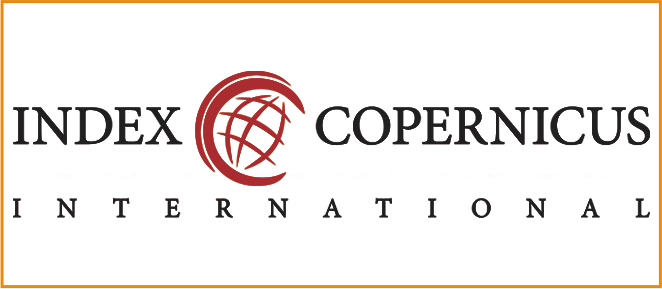Implementasi Long Short-Term Memory pada Chatbot Informasi Akademik Teknik Informatika Unila
Abstract
The times have made technology develop rapidly and rapidly, one of which is artificial intelligence. According to an Accenture survey, s can help organizations with up to 30% operational costs and users enjoy having 24/7 instant access to the answers they order. However, there are many organizations and companies that have not used s to facilitate business, one of which is the Informatics Engineering Study Program, University of Lampung (PSTI Unila). The purpose of this research is to able to apply the Long Short-Term Memory (LSTM) algorithm to the academic information at PSTI Unila and demonstrate the accuracy of the algorithm. Broadly speaking, this research consists of 4 stages: data collection and exploration, data preparation, building model and training, and testing the model. The model is tested using the user validation method which gets an accuracy of 99%. With these accurate results, this model is quite feasible to be used as a place for students to ask questions about PSTI Unila academic information.
Keywords
Full Text:
PDFReferences
R. Stauffer, “Understanding & Implementing Chatbots at Your Agency,” 20 April 2021. [Online]. Available: https://blog.hawksoft.com/chatbots. [Diakses 22 February 2022].
Accenture, “Chatbots are Here to Stay,” 2018. [Online]. Available: https://www.accenture.com/_acnmedia/pdf-77/accenture-research-conversational-ai-platforms.pdf. [Diakses 22 February 2022].
B. Kurniawan, “Chatbot Eksplorasi Ayat Al-Quran Menggunakan Algoritma Bidirectional Long Short-Term Memory (Bi-LSTM) dan Fuzzy String Matching,” Universitas Sumatera Utara, Medan, 2021.
I. M. Untari, “Chatbots and Government Communications in Covid-19 Pandemic,” Jurnal Komunikasi Indonesia, vol. IX, 2020.
A. B. H. S. A.-A. D. S. P Anki, “Intelligent Chatbot Adapted from Question-and-Answer System Using RNN-LSTM Model,” Journal of Physics: Conference Series, 2021.
V. R. Prasetyo, N. Benarkah dan V. J. Chrisintha, “Implementasi Natural Language Processing Dalam Pembuatan Chatbot Pada Program Information Technology Universitas Surabaya,” TEKNIKA, 2021.
H. A. Amalia, “Berita Satu,” 1 Oktober 2021. [Online]. Available: https://www.beritasatu.com/archive/835281/survei-pancake-baru-15-pelaku-umkm-indonesia-pakai-chatbot. [Diakses 23 Mei 2022].
Muliyono, “Identifikasi Chatbot dalam Meningkatkan Pelayanan Online,” Jurnal Informatika Ekonomi Bisnis, 2021.
A. Y. Chandra, D. Kurniawan dan R. Musa, “Perancangan Chatbot Menggunakan Dialogflow Natural Language,” Jurnal Media Informatika Budidarma, 2020.
W. K. &. L. S. Härdle, Applied multivariate statistical analysis (4th ed.), Cham: Springer, 2015.
G. A. Royani Darma Nurfita, “Implementasi Deep Learning Berbasis Tensorflow untuk Pengenalan Sidik Jari,” Emitor: Jurnal Teknik Elektro, vol. 18, 2018.
A. Leeuewenberg, M. Vela, J. Dehdari dan J. Genabith, “A Minimally Supervised Approach for Synonym Extraction with Word Embeddings. The Prague Bulletin of Mathematical Linguistics,” pp. 111-142, 2016.
D. P. R. R. F. M. I. S. B. A. Winda Kurnia Sari, “Klasifikasi Teks Multilabel pada Artikel Berita Menggunakan Long ShortTerm Memory dengan Word2Vec,” Jurnal RESTI, vol. 4, 2020.
I. B. Y. &. C. A. Goodfellow, “Deep learning,” Cambridge: MIT Press., 2016.
C. Olah, “Understanding LSTM Networks,” 27 Agustus 2015. [Online]. Available: http://colah.github.io/posts/2015-08-Understanding-LSTMs/. [Diakses 22 February 2022].
DOI: http://dx.doi.org/10.36448/expert.v12i1.2593
Refbacks
- There are currently no refbacks.
EXPERT: Jurnal Manajemen Sistem Informasi dan Teknologi
Published by Pusat Studi Teknologi Informasi, Fakultas Ilmu Komputer, Universitas Bandar Lampung
Gedung M Lt.2 Pascasarjana Universitas Bandar Lampung
Jln Zainal Abidin Pagaralam No.89 Gedong Meneng, Rajabasa, Bandar Lampung,
LAMPUNG, INDONESIA
Indexed by:













This work is licensed under a Creative Commons Attribution 4.0 International License.







